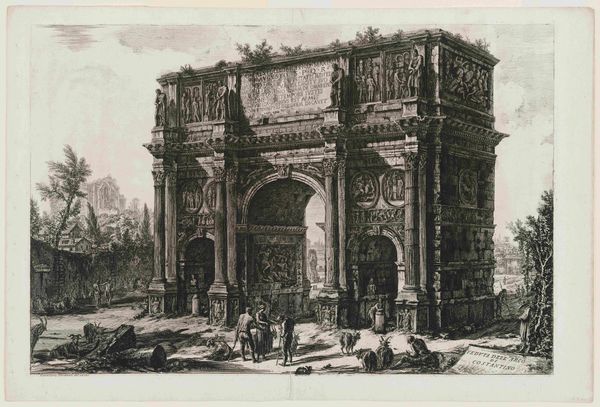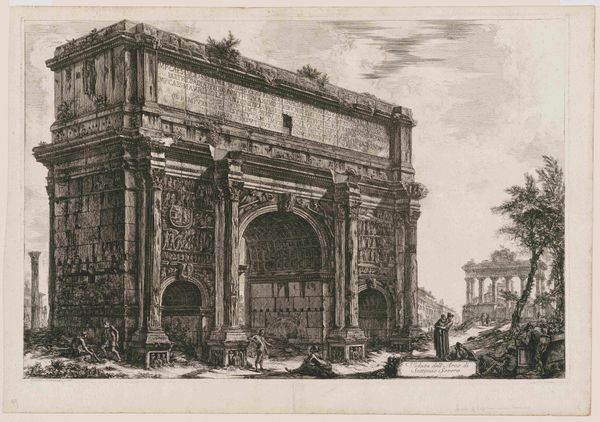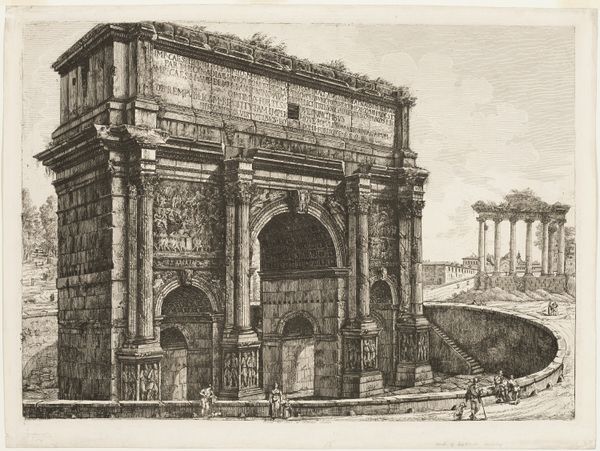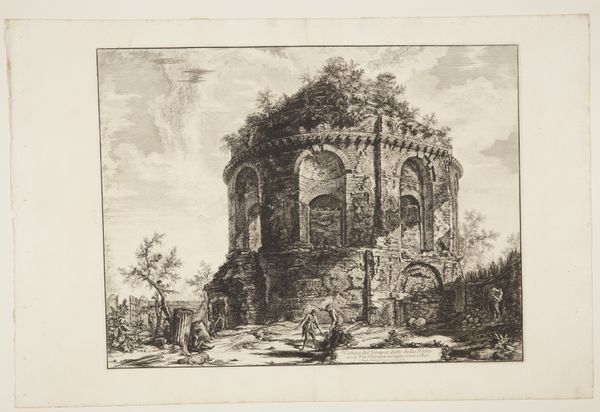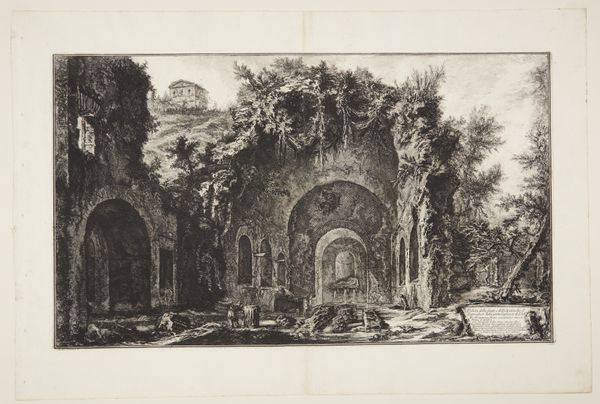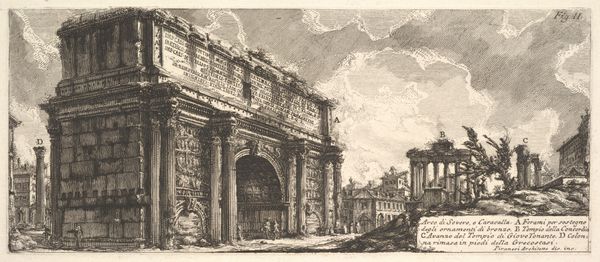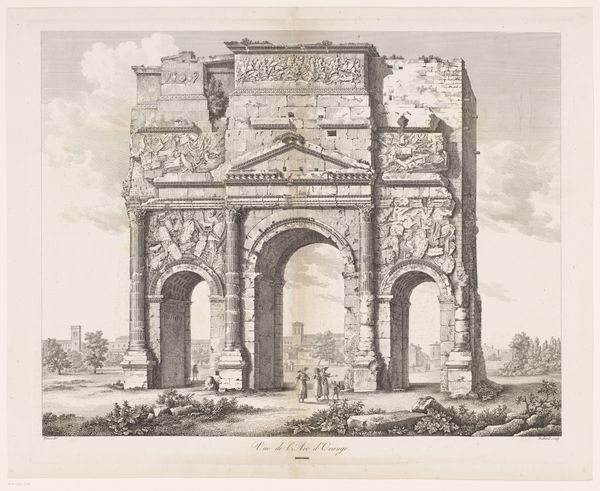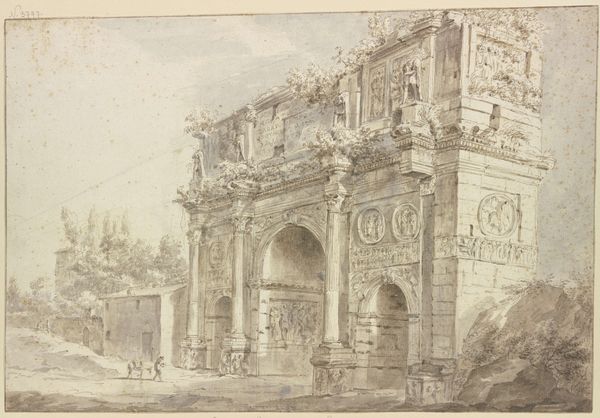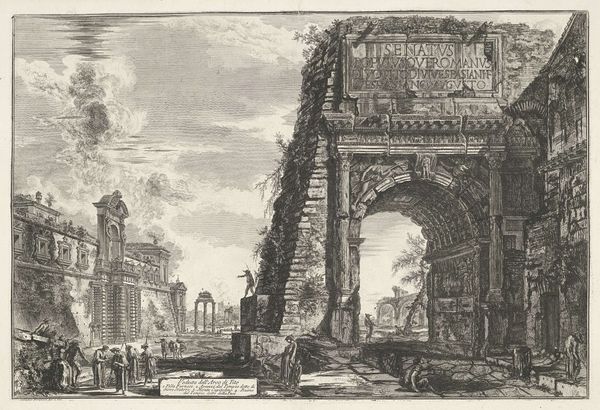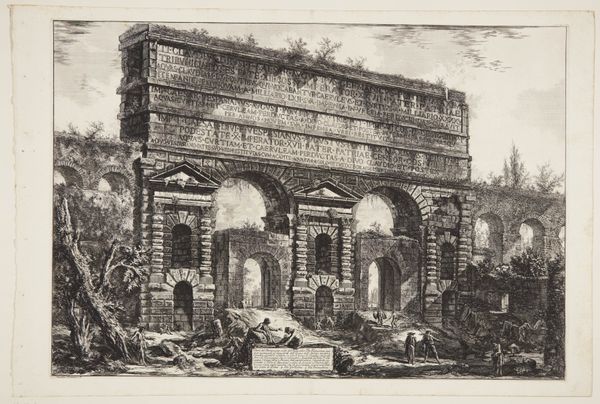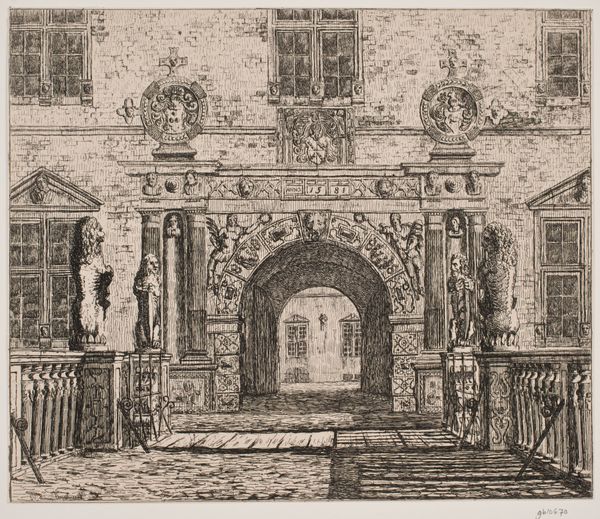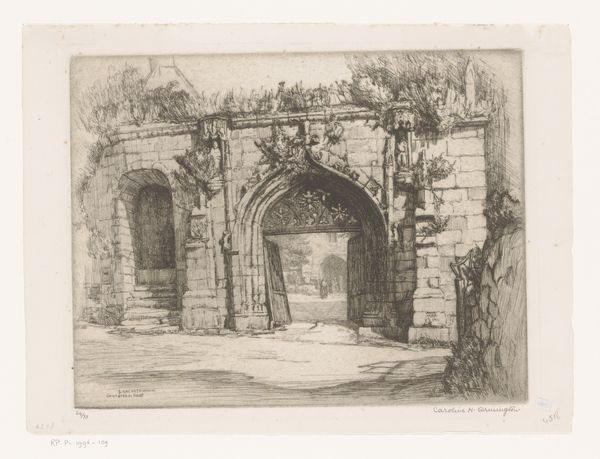
Arch of Trajan at Beneventum in the Kingdom of Naples 1778
0:00
0:00
Dimensions: 18 3/4 x 28 1/4 in. (47.63 x 71.76 cm) (plate)19 3/4 x 29 3/16 in. (50.17 x 74.14 cm) (sheet)
Copyright: Public Domain
Curator: This etching by Giovanni Battista Piranesi, created in 1778, depicts the Arch of Trajan at Beneventum in the Kingdom of Naples. Editor: It’s strikingly imposing, isn’t it? Even rendered in monochrome, you sense the weight and scale of the architecture. There’s a deliberate use of light and shadow to amplify its monumentality. Curator: Indeed. Piranesi, through this image, engages with the complicated legacy of Roman imperialism in Naples. This was a period of Neoclassical fascination with Roman antiquity, but it’s important to recognize that Naples also experienced exploitation under Roman rule. This piece speaks to that tension. Editor: Absolutely. The perspective Piranesi employs directs our gaze upwards, emphasizing the arch's towering presence. The crispness of the lines captures every intricate detail of the carved reliefs, which are integral to its monumental effect. It's Roman engineering celebrated through pure form. Curator: He highlights these imperial reliefs—symbolic narratives of Trajan's power and beneficence—while simultaneously including details of everyday life happening around the monument. Note the figures milling about in the foreground. Piranesi inserts Neapolitan peasants enacting their lives. It complicates our understanding by reminding us to think about whose history gets told and who gets written out. Editor: True. Piranesi, the master engraver, clearly understood how tonal variation influences perception. Those figures offer an additional contrast. The eye travels from the shadowy depths of the arch to those sharply delineated figures—strategically placed to provide spatial depth and highlight the arch's structure. Curator: In foregrounding everyday life, Piranesi hints at the narratives sidelined by these declarations of Roman power, implicitly asking viewers to question power dynamics—then and now. He's drawing attention to the legacies that are often obscured by grand historical narratives. Editor: Agreed, and this etching allows us to appreciate the formal properties of line and composition—qualities that give structure and coherence to the work. But for me it's more than political commentary—it's about the genius inherent in design. Curator: So for you, it is also an admiration for power. Whereas I see it as Piranesi compelling us to remember history’s nuanced story. Editor: Well, whatever the interpretation, there's no question of Piranesi's artistry here, especially with the use of linear perspective. Curator: No question at all, and food for thought regarding whose stories are etched in stone—and whose are not.
Comments
No comments
Be the first to comment and join the conversation on the ultimate creative platform.
